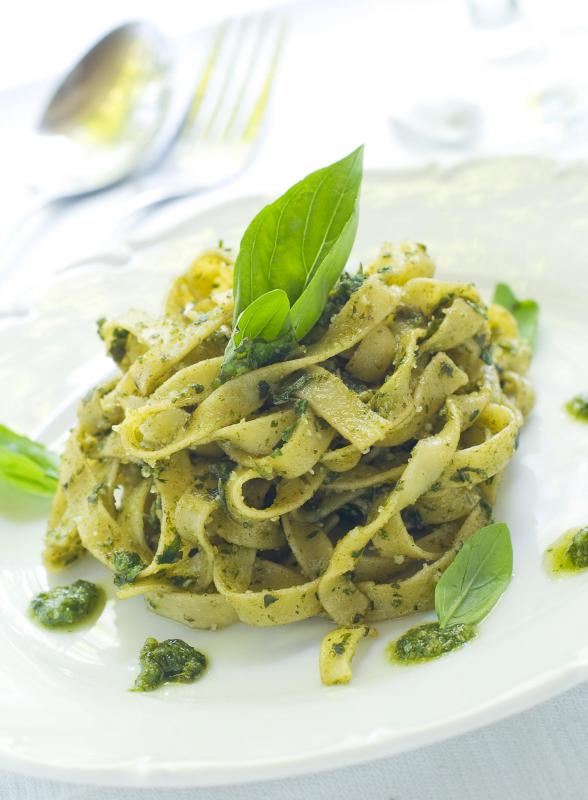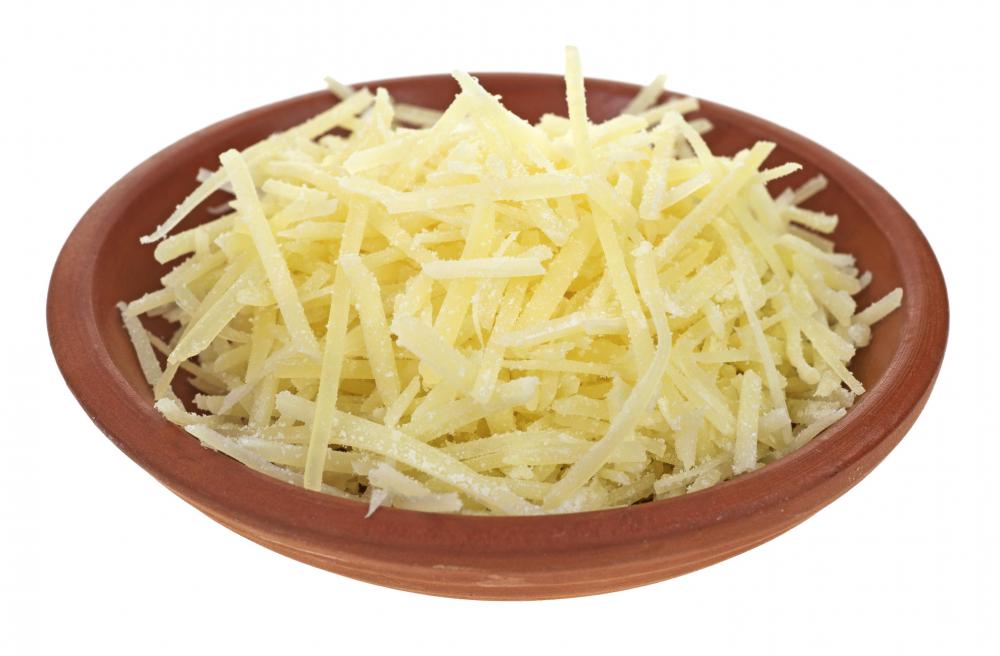At WiseGEEK, we're committed to delivering accurate, trustworthy information. Our expert-authored content is rigorously fact-checked and sourced from credible authorities. Discover how we uphold the highest standards in providing you with reliable knowledge.
What Is Cilantro Pesto?
Cilantro pesto is an oily spread usually made of crushed cilantro leaves, pine nuts, garlic, olive oil, and Parmesan cheese. Pesto is a traditionally Italian dish and as such is commonly served on pastas, pizzas, and bruschetta-style toast. Cilantro pesto is a non-traditional variation that pairs equally well with spicier foods, particularly those of Mexican and Asian cuisines.
The word pesto is Italian for “pounded,” in large part owing to the method in which pesto is — or at least traditionally was — made. Most food critics recognize original pesto as the combination of basil leaves, garlic, pine nuts, oil, and cheese. Almost any variation on these basic ingredients can still be called a pesto. A cilantro pesto is simply a pesto with cilantro either replacing the basil or added to the basil.

There is no single cilantro pesto recipe. Cheese and oil are usually essential to hold the pesto together, but other nuts, such as walnuts, can replace the traditional pine nuts. Ingredients such as sun-dried tomatoes or black olives can also be added for a more unique and flavorful pesto.
Cilantro is the leaves of the coriander plant. Coriander seeds have a distinctive, almost spicy taste that comes through in the leaves. Cilantro and coriander are most commonly used in Latin American and South Asian cuisines, though the plant is native to Europe’s Mediterranean coasts. Creating a cilantro pesto is at once a regionally appropriate twist on an Italian favorite, and a means of turning something familiar into something new.
Most herb pesto, cilantro pesto included, can be eaten raw. Once blended, herb pesto is usually ready to spread and enjoy. It is a particularly versatile dish, however, in that it can usually also be cooked or warmed as recipes and tastes demand.

Cooking with cilantro, much like cooking with herbs of any variety, is relatively straightforward. A bit of heat often helps herbs release their flavors. It is never usually a good idea to expose herbs directly to hear or open flames, as they can catch fire or easily grow brittle, but a slow, steady heat can produce a wonderful intensity of flavors not always present in raw herbs.

In a pesto, the oil acts as something of a preserving agent. The herb releases its aromatics into the oil, which then seeps into the meat, pasta, or other dish once warmed. Some cooks spread pesto over food as it is baking in order to seal in flavors. Others will heat the pesto alone in a small pan, then will add the warmed mixture to a dish just before serving.
AS FEATURED ON:
AS FEATURED ON:













Discuss this Article
Post your comments